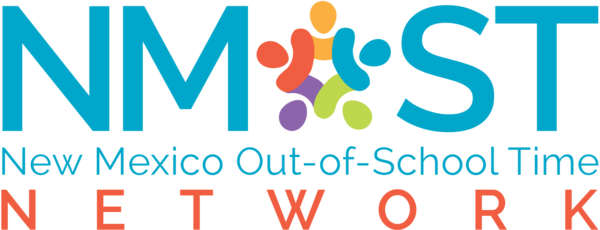The final question in the application for the New Mexico Out-of-School Time Network’s (NMOST) annual Advancing Young Women in STEM Scholarship asked applicants: “What are your top 2 recommendations for how educators and/or program administrators could make STEM activities and programs more inclusive and welcoming for women?” In other words, NMOST asked these young women what changes they would like to see in the STEM learning environment. Most of the improvements young women suggested could be implemented by increasing access to quality STEM learning opportunities.
56.7% percent of applicants suggested greater access to quality STEM learning opportunities, 42.3% percent suggested increased female representation in STEM learning, 38.5% suggested greater community support for STEM career goals, and 22.1% suggested greater access to mentors and career preparation.
Out-of-School Time (OST) STEM activities are quality STEM learning opportunities that can provide young women with representation, community support, and mentoring opportunities. The study “A Museum Program Enhances Girls’ STEM Interest, Motivation, and Persistence” by Jennifer Adams et al. (2014) explores how the Lang Science Program at the American Museum of Natural History positively affected the relationship to STEM for young women of color. The program starts in middle school and ends after high school graduation. It has an evolving curriculum to fit the learning needs of the different age groups from a broad spectrum of many different subjects in middle school, to a more focused research based experience for high school students, and finally a college readiness section for graduating seniors. Researchers focused on how the Lang program helped to build science affinity-identity, a term that both describes an individual enjoying science and feeling a part of scientific endeavors (Adams et al.). The authors found that the Lang OST program contributed to both representation and community support for the young women participants.
“YOUNG GIRLS NEED TO SEE ROLE MODELS IN WHATEVER CAREERS THEY MAY CHOOSE, JUST SO THEY CAN PICTURE THEMSELVES DOING THOSE JOBS SOMEDAY. YOU CAN’T BE WHAT YOU CAN’T SEE” (SALLY RIDE, 2012).
One applicant from the 2020 scholarship cycle described the importance of participating in quality STEM learning opportunities:
“Activities such as STEM challenges or games could help young girls develop skills and knowledge about these subjects. As a female who is interested in pursuing a STEM career I think that if I had the opportunity to attend more camps for girls and to participate in STEM activities I would’ve been much more confident as I’m preparing to graduate. Females shouldn’t feel intimidated by males when it comes to STEM. I hope that as the education system continues to evolve, young girls get more opportunities to pursue their STEM passions.”
In the study “Culturally Relevant STEM Out-of-School Time: A Rationale to Support Gifted Girls of Color,” Young et al. (2019) talk about the difficulty of sustaining young women of color’s interest in STEM. They argue for the need to develop a positive STEM identity through culturally relevant STEM learning, which is described as connecting “STEM content” to the “learners’ lived experiences” (p. 10). The authors go on to describe how the rigid structure of the public education system cannot produce a more nuanced approach to STEM education. OST creates a flexible environment that can “offer time, tolerance, safety, choice, and the ability to incorporate emotional, aesthetic, and social elements into learning activities” (p. 11).
A 2021 scholarship applicant of Hispanic descent described how the public education system turns young women away from STEM:
“I feel that (especially in public schools) educational reform is needed. Coming from my own experiences it is strict, too structured, and ultimately does not capture real life skills that students learn later on their own. For instance, sometimes it is obvious that freshman students coming into college do not know how to study and teach themselves on their own, which is a critical skill, especially in CS.”
OST programs can provide opportunities to address all the recommendations that applicants provided in their essays. A girl focused STEM OST program can increase female representation by incorporating a curriculum that highlights the contributions of female scientists through history. This same program can build a sense of community for young women with the other participants in the program and with the adults running the program. Finally, a STEM OST program can provide more access to STEM mentors for young women. Young et al. (2019) shows how the informal nature of STEM education provides an opportunity for female mentors from industry and academia to be recruited (p. 13).
Young women know what they need to succeed in STEM disciplines. Based on the responses in NMOST’s 150 Advancing Young Women in STEM scholarship applications, it is clear that they have ideas for how to improve the STEM education system to better cultivate a more diverse STEM workforce. Maybe the question should not be why aren’t more women and people of color interested in STEM, but rather, why aren’t we changing the education system to fit the needs of all learners?
